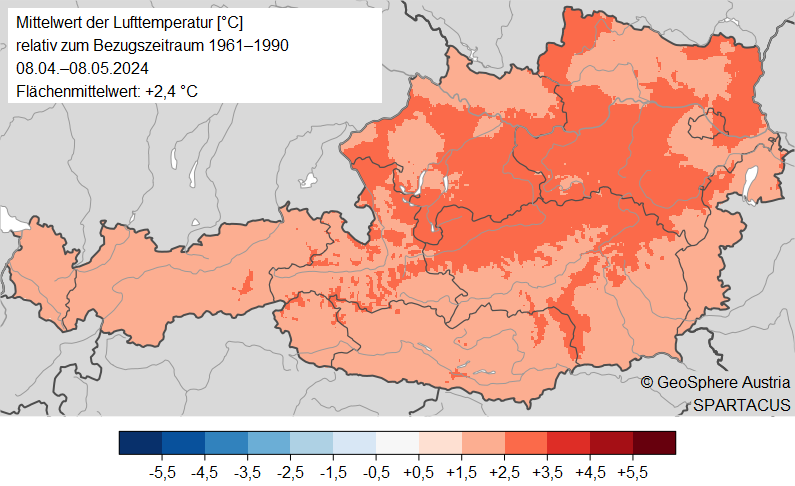Global warming clearly visible this year

The temperature records are breaking this year. The warmest March ever recorded followed the warmest February in 258 years of records and April is likely to join the ranks - we are expecting temperatures of up to 30 (!) degrees this weekend. Unbelievable but true. The alarming trend of recent months continues. The rapid change from cold to warm is a challenge for our bodies.
"We have never had two months in a row that were the warmest in recorded history. Recently, however, this has happened twice," explains climate researcher Marc Olefs from Geosphere Austria to science.ORF.at, referring to the fact that four of the past seven months, namely September and October 2023 and February and March 2024, broke the heat records.

This has never happened before, says GeoSphere climatologist Alexander Orlik about the ongoing heat records. This does not only affect Austria. It was also exceptionally warm in many neighboring countries and in Eastern and South-Eastern Europe in March. Globally, temperatures have been at record levels for ten months now, and the world's oceans have been warmer for over a year than at any time since measurements began.
Warming is due to man-made climate change
The World Meteorological Organization (WMO) has already warned that 2024 could top the record year of 2023. This is mainly due to man-made (anthropogenic) climate change, i.e. the emission of greenhouse gases through human activities using fossil fuels. "We must not forget: The ultimate reason why we are experiencing long-term warming and these massive consequences of man-made climate change is precisely the greenhouse gases that retain this heat in the Earth's atmosphere." Added to this is the climate phenomenon "El Nino", which occurs every two to seven years and intensifies the effect.
Vegetation is developing rapidly
The vegetation has also developed at a rapid pace due to the high temperatures and is between two and three weeks ahead of the normal process to date. For some plants it is even four weeks. For example, the Wachau apricot blossom started three weeks earlier and in eastern Austria the lilac - the typical flower for Mother's Day - has already begun to bloom. This is problematic because there is a likelihood of late frosts, which can greatly reduce the harvest.
More hot days to come - summer expands
The feeling that fall and spring are getting shorter can be substantiated by data. "We can see in the long-term temperature trend that all seasons are getting warmer and that the summer half-year is extending further and further into the marginal months. In the future, we will definitely have to expect such rapid transitions from the winter to the summer months again and again," says Olefs. He also sees a clear trend towards a sharp increase in hot days in Austria - especially in the east and south of the country. In recent decades, the number of hot days has doubled to tripled - depending on the location, we now have around 16 to 20 hot days. According to experts, this figure is set to double or triple again by 2100 - depending on the level of global warming. This also means a heavy health burden for us humans.
Global development is alarming
This development is alarming, says WMO Secretary-General Celeste Saulo. We must act urgently to drastically reduce CO2 emissions in the face of such rapid global warming.
Alarming WMO report: Climate change indicators reached record levels in 2023






